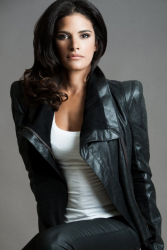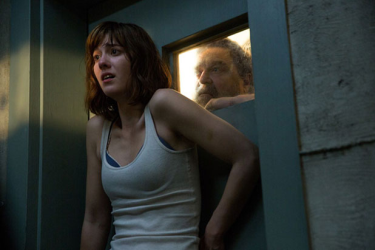As you may recall, one of the big questions we struggle with on this blog is “how little Jesus does it take to ruin a movie for a critic?” The Hollars demonstrates that it takes literally no Jesus at all for critics to hate on a film. We were quite perplexed when this cancer drama/comedy with Margo Martindale, Richard Jenkins, Anna Kendrick, Mary Elizabeth Winstead, Mary Kay Place and directed, produced and starring John Krasinski (written by James C. Strouse) not only came in with a low 44% score from critics—but audiences gave it a strong 74%. After receiving a warm review from a pal, who was sort of perplexed by the critic hate, and reading the bullshit assessment “seen it!” from critics, we virtually had to go see it.
In the first scene we see him in, John (Krasinski) is shown drawing a cartoon. It’s only for a second, and it shows darkness and a baby saying “Don’t I get a vote?”

No, little dude, you don’t. Even raising the question is career suicide.
Even though there might be a ton of possible explanations for that image, I’m going to say The Hollars was doomed at that point, because it could be considered as sacrilege against that most holy of all rights. Later on in the film, we learn that John’s brother Shelton’s (Sharlto Copely, District 9, Elysium) ex-wife is seeing a youth pastor named Rev. Dan (Josh Groban, Crazy, Stupid, Love, some sort of musical stuff). Not only is Rev. Dan not a pedophile, he’s also a pretty good guy overall, genuinely concerned for Shelton’s well-being (moreso than Shelton’s ex, who would have him thrown in jail).
Two strikes for Krasinski right there.

He’s actually the most centered guy in the film.
The Boy pointed out later that our heroes in this film were small business owners. Suffering from hard times, these white, middle-class people were struggling to make ends meet.
Strike three.
I’m sorry Mr. Krasinski, but if you want good reviews, you’ll have to put in some transgendered stuff, or maybe some rich people acting horrible to minorities. Mere miscegenation (Shelton’s wife, played with gusto by Ashley Dyke, 12 Years A Slave, is black I think) just doesn’t cut it anymore, especially when you had several perfectly good chances to trash white people, Christians and the middle class. I’m not kidding: This is the reason the critics trashed this film, though they’d probably never admit it.

I wouldn’t know. I sure wouldn’t care.
Because this is a really, really good movie. The Boy and I were serially impressed by the way it could’ve gone wrong and didn’t. At first you think maybe this is going to be an attack on “those sorts”, whoever they may be. When we meet Sally (Martindale) and Don (Jenkins), they’re bickering, and Sally’s serious condition has gone untreated for years because—well, it’s both tragic and hilarious, the reason why. It’s also very real, if not very sophisticated. Salt-of-the-earth types with plumbing stores don’t go running off to the doctor for a little, uh, blurred vision and limb numbness.
The business is in trouble, of course, and Don is trying to protect Sally—but Sally does the books, so she pretends to let Don protect her, but confides in John that, of course, she knows, and Don and Shelton have had a falling out, which doesn’t help the situation for anyone, while Shelton is jealous and angry at John, and John can’t commit to his very pregnant and skittish girlfriend (Kendrick). You sort of wonder, at this point, if you’re just going to be watching 90 minutes of dysfunction. And the refreshing, and not at all common way that this is handled is: You’re not.

The Everyman and Everywoman: They gots issues, but they’re decent sorts.
Yeah, the Hollars got problems, as do we all. But they’re not really dysfunctional, even if they need an occasional kick in the pants. What’s even better, though, is that the Hollars love each other and they actually show this. A lot of fatal disease movies (especially the chick flicks) have people treating each other absolutely awful, and only being dependable at the most dire of situations. That’s a weird sort of love, frankly. So, while the Hollars snipe and bicker, not infrequently, they also not infrequently don’t snipe and bicker. They help each other out; they’re nice, even. Which, quite frankly, might be another demerit for the professional critic.
The other thing that was really nice about this movie is that it doesn’t try to be depressing. It raises more than a few very serious and possibly sad questions. It doesn’t always give the happy answers. But there is a strong affirmation of life here. You can get far in life and maybe regret some choices, even some really big ones, but you gotta keep going, push through the fear, and above all keep on laughing.
The actual shape of the film, I will grant, is somewhat predictable: A movie like this can only go one of two ways, pretty much (live or die). And I knew how it would have to play out in order to work dramatically, though not right away. But the good news is that it did play out that way, and avoided being both wholly depressing and wholly panglossian. If you see only one cancer movie this year, this would be your best choice.
Oh, Mary Elizabeth Winstead, who did so well in 10 Cloverfield Lane and has been turning up in some sweet little roles lately (as in Swiss Army Man), has a sweet little role here as the ex-highschool girlfriend who sees an out in John. She’s definitely starting to win me over. (I guess the problem has never been her acting, but a lack of interesting roles in the things I’ve seen her in.)

Second look at Winstead?

2 thoughts on “The Hollars”